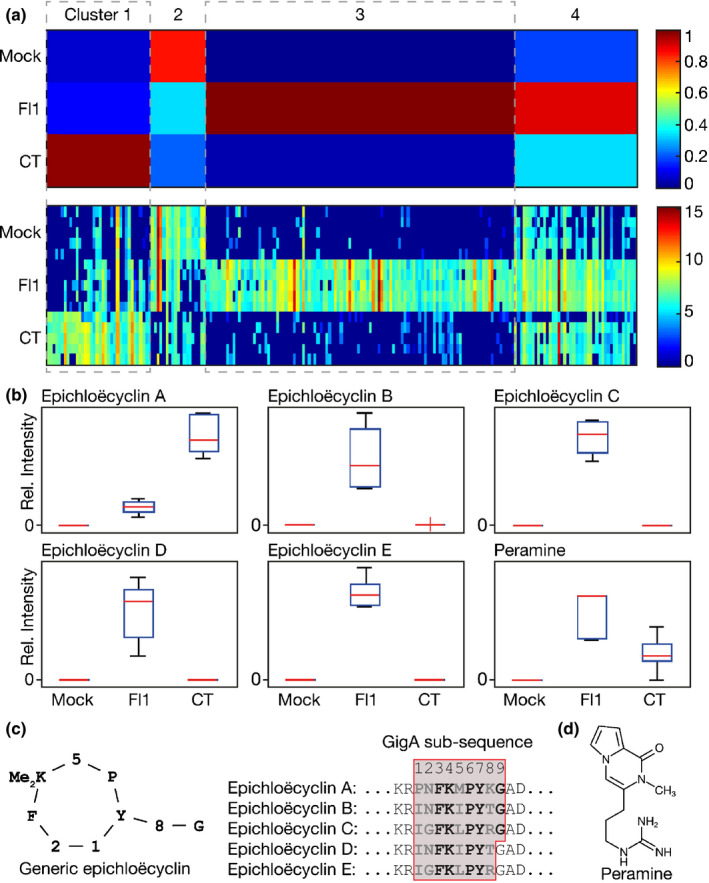Fig. 1.

Metabolic fingerprinting of apoplastic wash fluid extracted from Epichloë festucae‐infected and uninfected Lolium perenne. Apoplastic wash fluid obtained from mock‐inoculated (M), Fl1‐infected (F) and common‐toxic endophyte (CTE)‐infected (C) L. perenne associations at 18 wk post‐inoculation were analysed by ultraperformance liquid chromatography‐electrospray‐ionization/quadrupole time‐of‐flight MS. (a) marvis one dimensional‐self organizing maps (1D‐SOM) intensity‐based clustering of the 203 features (false discovery rate < 0.003) detected in apoplastic wash fluid using ESI (blue low, red high). Five samples of M, F and C were analysed. Polar and nonpolar, positive and negative ESI data have been combined. (b) Metabolites confirmed to be in the apoplastic wash fluid samples by ultrahigh performance liquid chromatography‐quadrupole time‐of‐flight‐high resolution‐MS/MS and their respective intensities. The red mark of the box plot indicate the median. The bottom and top edges of the box represent the 25th and 75th percentiles, while the whiskers show the most extreme data points not considered outliers. (c) Generic representation of epichloëcyclin structure and GigA repeat sequences from which epichloëcyclin A–E are derived. (d) Structure of peramine.
